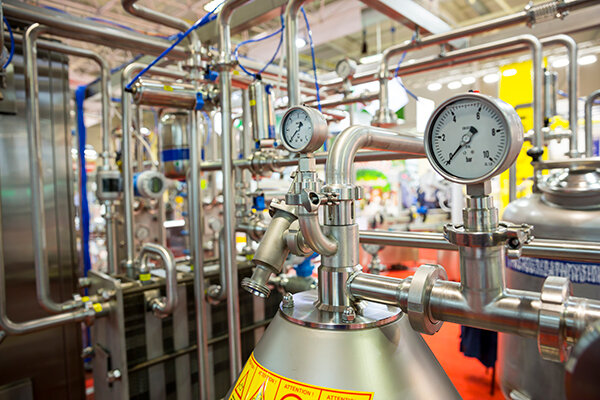Dairy Product Production
Business for Sale Industry Economics
$111,222,000,000
Revenue
1.80%
Projected CAGR
2005 - 2021
Historical
2021 - 2027
Projection
1.35%
CAGR
$3,225,000,000
Profit
Quick Scroll
Summary
The Dairy Product Production industry consists of operators that manufacture a wide variety of dairy goods and then supply them to downstream markets, such as wholesalers, retailers and foodservice establishments.
Industry revenue performance has been volatile but has declined overall. Volatility in the industry has also been due to large fluctuations in the price of raw, or unprocessed, milk.
Thus, industry revenue has declined at an annualized rate of 0.3% to $111.2 billion over the five years to 2021, including a decline of 0.3% in 2021 alone due to the lingering impact of the COVID-19 (coronavirus) pandemic creating unfavorable economic conditions.
The pandemic has reduced demand from wholesalers and foodservice establishments, although research anticipates this will rebound during the outlook period.
Performance
The Dairy Product Production industry manufactures dairy goods for wholesalers, retailers and foodservice establishments. Over the five years to 2021, the industry has experienced declining revenue, which has been primarily driven by a shift in consumer preferences.
The price of raw milk has most significantly affected industry revenue, exhibiting volatility during the period. Industry operators typically benefit from higher input prices because they can pass along the costs to consumers in the form of higher prices.
Consumers typically purchase these goods regardless of price hikes since dairy products are a staple of the average US diet. When milk prices decrease, industry players are typically forced to charge consumers lower prices, causing industry revenue to fall. However, the price of milk has increased at an annualized rate of 2.3% over the five years to 2021.
Additionally, a general shift in consumer preferences as dairy related to health issues in some studies, coupled with the COVID-19 (coronavirus) pandemic, has resulted in declining industry revenue. Thus, revenue has fallen at an annualized rate of 0.3% to $111.2 billion over the five years to 2021, including a decline of 0.3% in 2021 alone, which is likely due to a sharp decrease in demand from wholesalers and food service establishments.
Although research anticipates industry revenue to decline in 2021, it is somewhat of a recovery from 2020 levels, where industry revenue declined 11.6%.
Outlook
Over the five years to 2026, the Dairy Product Production industry is expected to benefit from stabilized prices of feed and raw milk. This trend will likely be the primary cause of a slight increase in industry revenue. As input prices stabilize, industry operators will also likely benefit from increased demand from downstream markets. The economy is expected to rebound during the outlook period after the COVID-19 (coronavirus) pandemic has abated.
Thus, household disposable income is expected to rise, and demand for major market segments, such as retailers and wholesalers, will likely bolster industry production and sales. Increased demand is expected to encourage larger purchases, which will likely grant industry players a stable revenue stream as higher input prices, such as the price of feed, are passed downstream to a growing consumer base.
Furthermore, milk prices are expected to be less volatile compared with the five years to 2021, enabling producers to price their products more effectively and manage supply contracts better. Moreover, as more Americans become more health-conscious, producers will likely continue to innovate and introduce healthier varieties of dairy products, which they will likely sell at higher price points.
These factors are expected to lead to increased industry revenue, which is anticipated to rise at an annualized rate of 0.9% to $116.1 billion over the five years to 2026.

Industry
Operators in this industry manufacture dairy products such as pasteurized milk, cream, butter, yogurt, cheese and dry, condensed and evaporated milk.
Operators supply these goods to a variety of market segments such as retailers, wholesale and food services. Producers of dairy products such as ice cream and frozen yogurt are excluded from this industry.
Investment
The Dairy Product Production business requires a moderate amount of capital. Operators are estimated to spend $0.30 on capex for every dollar of revenue in 2021.
Dairy producers assemble and create goods using machinery and storage facilities. Because they have a bigger income stream, major manufacturers invest far more in technology and production than smaller businesses.
Dairy Farmers of America Inc., for example, collaborated with Ireland-based Glanbia and the Greater Southwest Agency to build a state-of-the-art production plant in Clovis, New Mexico.
Overall, the business is still labor-intensive, with salaries accounting for 6.6 percent of total sales.
Volatility
Dairy is a household staple in the United States, hence the demand for the Dairy Product Production industry is crucial and generally unaffected by changes in industry pricing.
Dairy is an important element of many people’s weekly shopping lists, with price fluctuations impacting demand for certain brands and kinds.
The raw milk market price determines the majority of the industry’s revenue. Because milk is a key ingredient in the making of cheese, yogurt, and butter, any change in its price has a significant impact on industry supply.
The price of milk has fluctuated dramatically during the last five years. In general, raw milk prices have decreased during the last five years, resulting in a decrease in overall industry income.
However, the industry’s income is relatively erratic due to the overall volatility of raw milk prices. Due to fluctuating milk and feed costs, industry income has been moderately unpredictable during the last five years.
However, owing to the COVID-19 (coronavirus) pandemic, this is anticipated to alter in 2020, with income anticipated to drop 7.9%. The sector’s modest revenue volatility is predicted to reduce following the pandemic and a projected economic recovery, as demand for sector products grows, propelled by a growing economy and changing consumer habits.
Despite this, industry revenue is expected to fall by 0.3 percent in only 2021. The most significant drop in revenue for industry operators happened in 2020 when revenue fell 7.9%. In 2019, industry revenue climbed by up to 6.0 percent.
